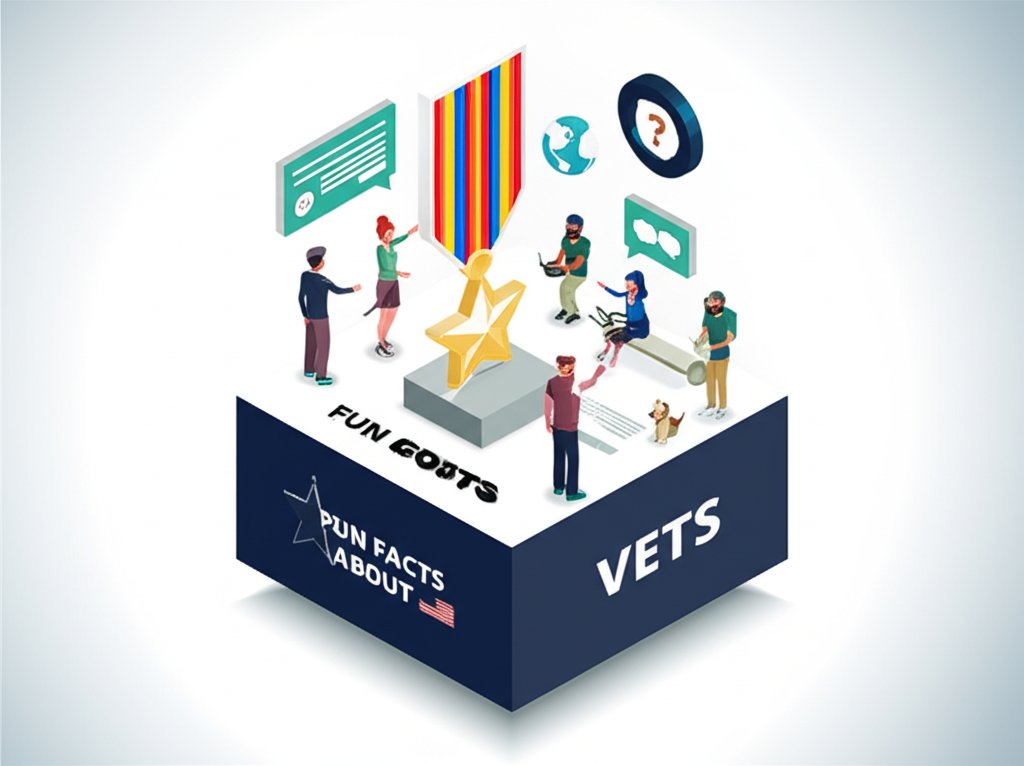Ever wondered what it’s truly like to walk a day in the paws of a veterinarian? Beyond the heartwarming cuddles and the visible triumphs, there’s a universe of rigorous training, diverse challenges, and profound emotional depth that defines this extraordinary profession. Many assume it’s all adorable puppies and kittens, but the reality is far more complex, fascinating, and at times, intensely demanding. If you’re looking for fun facts about vets and the truth about being a veterinarian, you’ve come to the right place. This article will peel back the curtain, revealing 10 fun facts about being a veterinarian that showcase their incredible dedication, surprising roles, and the often-unseen facets of their vital work. Get ready to have your perceptions transformed as we explore the untold truths of animal medicine!
The Rigors & Rewards: Unpacking a Veterinarian’s Incredible Journey
Becoming a veterinarian isn’t just a career; it’s a calling that demands an unparalleled blend of scientific mastery, unyielding compassion, and a resilience that few professions rival. The path is long, demanding, and constantly evolving, ensuring every graduate is a true master of their craft.
If these initial fun facts about vets have piqued your interest, you can explore even more surprising and insightful details about their profession on this list of vet facts.
Fact 1: The Brainpower Marathon – More Degrees Than You Think!
One of the most mind-boggling fun facts about vets is the sheer academic gauntlet they endure. Aspiring veterinarians typically complete a challenging four-year undergraduate degree, often specializing in fields like biology, chemistry, or animal science. This is then followed by another four years of intensive veterinary medical school, culminating in a Doctor of Veterinary Medicine (DVM) degree. That’s a minimum of eight years of higher education, often exceeding the requirements for human medical doctors in terms of required pre-clinical hours and the breadth of species covered.
Imagine learning the intricate anatomy, physiology, pharmacology, pathology, and surgical techniques for multiple species – dogs, cats, horses, cows, birds, reptiles, and more – all at once! This comprehensive training is a testament to the intellectual capacity and dedication required, revealing the truth about being a veterinarian is rooted in an extraordinary academic commitment. It’s like earning several medical degrees rolled into one, making them biological polymaths.
Fact 2: Beyond Your Pet’s Vet – Over 20+ Specialist Superpowers!
Just like human medicine, veterinary medicine offers a vast array of specializations, making this a truly revealing fun fact about being a veterinarian. After obtaining their DVM, many vets pursue advanced training through rigorous residencies (2-4 years) and board certification. There are over 20 recognized specialties, allowing vets to become world-class experts in incredibly niche areas. This includes:
- Cardiology: Heart conditions.
- Oncology: Cancer treatment.
- Neurology: Brain and spinal cord issues.
- Dermatology: Skin and allergy experts.
- Ophthalmology: Eye care, including complex surgeries.
- Anesthesiology: Ensuring safe sedation for procedures.
- Dentistry: Oral health and advanced dental surgery.
- Forensic Veterinary Medicine: Investigating animal cruelty, determining cause of death.
- Zoological Medicine: Caring for exotic animals in zoos, wildlife centers, and aquariums.
- Thierogenology: Reproductive experts, helping animals conceive and deliver healthy offspring.
This incredible depth of knowledge means that no matter how rare or complex an animal’s condition, there’s likely a veterinary specialist trained to address it, pushing the boundaries of what’s possible in animal healthcare.
A World of Whiskers, Wings & Wonders: The Diverse Patients of Vet Med
The common image of a vet often revolves around cats and dogs, but the reality is a vibrant, wild, and sometimes surprising menagerie of creatures, showcasing fun facts about vets that stretch the imagination.
Fact 3: Not Just Fluffy Friends – From Hamsters to Hippos (and Beyond!)
It’s a widespread misconception that veterinarians exclusively treat domesticated pets. In reality, one of the most compelling fun facts about vets is their training encompasses an unbelievably diverse range of species. While many private practitioners focus on companion animals like dogs, cats, and small mammals, many vets specialize in:
- Large Animals: Caring for livestock such as horses, cattle, sheep, goats, and pigs, crucial for agricultural health and food safety.
- Exotic Animals: Providing care for birds, reptiles, amphibians, and even fish, requiring deep knowledge of vastly different biologies.
- Wildlife: Rescuing, rehabilitating, and releasing wild animals, from squirrels and eagles to deer and bears, often in challenging field conditions.
- Zoo Animals: Managing the health of thousands of species, from tiny insects to elephants and hippos, requiring creative solutions for diagnosis and treatment.
This expansive patient list means a vet’s day can literally pivot from a routine check-up on a Chihuahua to assisting in a lion’s dental surgery or tracking a disease outbreak in a bird population. The truth about being a veterinarian means being ready for anything with fur, scales, feathers, or fins!
Fact 4: The Unseen Guardians – Vets as Public Health Heroes & Disease Detectives
Here’s an untold truth about being a veterinarian that deeply impacts human lives: they are frontline defenders of public health. Their role extends far beyond individual animal care, making them crucial in preventing, controlling, and eradicating zoonotic diseases – illnesses that can spread from animals to humans. The Centers for Disease Control and Prevention (CDC) estimates that over 60% of known infectious diseases in people can spread from animals, and 75% of new or emerging infectious diseases in people come from animals.
Vets actively monitor animal populations for outbreaks, develop and implement vaccination programs, advise on food safety by inspecting livestock and food processing plants, and educate pet owners on disease transmission prevention. Their work in “One Health”—a collaborative approach recognizing the interconnectedness of human, animal, and environmental well-being—is a silent but powerful force protecting global public health. They are truly disease detectives, often working behind the scenes to keep entire communities safe.
Innovation & Ingenuity: High-Tech Healing and Unconventional Roles

The veterinary profession is a dynamic field, constantly embracing cutting-edge technology and discovering new ways to make a tangible difference, revealing truly fun facts about vets.
Fact 5: Time Travelers of Medicine – From Ancient Scrolls to AI Diagnostics
The history of veterinary medicine is a long and fascinating one, stretching back to ancient civilizations who recognized the value of their animals. Evidence suggests rudimentary animal healthcare was practiced millennia ago. The first formal veterinary college was established in Lyon, France, in 1761. From humble beginnings using folk remedies and basic surgical techniques, the field has exploded with innovation.
Today, vets utilize cutting-edge technology that rivals human medicine: advanced MRI, CT scans, ultrasound, endoscopy, laser surgery, robotics, and sophisticated pharmaceuticals. They are even exploring artificial intelligence for diagnostics and personalized treatment plans, utilizing genetic testing to understand predisposition to diseases. This continuous evolution means modern vets have an incredible arsenal at their disposal to diagnose and treat complex conditions, making their work a blend of historical legacy and futuristic science. This is a very fun fact about being a veterinarian that many don’t realize!
Fact 6: Surgical Wizards & Ingenious Inventors – Operating on the Untalkative
When considering fun facts about being a veterinarian, one often overlooks their incredible surgical prowess and innovative spirit. Vets regularly perform extremely complex surgeries, from intricate orthopedic repairs like knee (ACL) surgeries and hip replacements, to delicate soft tissue operations such as tumor removals, organ transplants, and even neurosurgery.
The truth about being a veterinarian surgeon is that they must adapt techniques for animals of vastly varying sizes and anatomies, and critically, their patients cannot communicate their pain or discomfort verbally during recovery. This demands not only exceptional technical skill but also a profound understanding of comparative anatomy and an ability to respond to unexpected challenges in real-time. Furthermore, vets are often inventors, designing specialized tools and techniques to overcome the unique challenges of treating non-human patients, pushing medical boundaries for all species.
The Heartbeat of Healthcare: Teamwork & The Realities Behind the Scenes
The life of a vet is rarely a solo act, and the environment can be far more varied than you might imagine. These aspects highlight crucial fun facts about vets and the truth about being a veterinarian that the public often misses.
Fact 7: The “Vet-Technician” Tandem – Unsung Heroes of the Clinic
While veterinarians receive the primary focus, one of the most important yet often unsung fun facts about vets is the critical role played by veterinary technicians and nurses. These highly skilled professionals are the backbone of any veterinary practice. They are certified and trained to perform a wide array of tasks, including:
- Assisting in surgery and anesthesia monitoring.
- Administering medications and treatments.
- Performing laboratory tests and diagnostic imaging (X-rays, ultrasounds).
- Providing critical nursing care to hospitalized patients.
- Educating pet owners on preventive care and post-operative instructions.
The truth about being a veterinarian is that they operate as part of a dedicated team. Without the expertise, compassion, and tireless work of vet techs, the high standard of animal care we expect would simply not be possible. They are truly vital partners in healing.
Fact 8: More Than a Clinic – Vets Go Where the Animals Are (Even Space!)
Unlike many professions confined to a single office, veterinarians possess the unique opportunity to work in incredibly diverse and exciting environments, making for truly fun facts about vets. While private clinics are common, their workplaces can also include:
- Emergency Hospitals: Fast-paced settings where every second counts in critical situations.
- Farms and Ranches: Traveling to provide on-site healthcare for livestock, often in remote areas.
- Research Laboratories: Advancing medical science for both animals and humans, developing new treatments and understanding diseases.
- Government Agencies: Working for organizations like the USDA or public health departments to ensure food safety, disease control, and disaster response.
- Universities: Teaching the next generation of veterinarians and conducting cutting-edge research.
- Military Service: Caring for service animals, K9 units, and even conducting global research.
- And yes, even space! Believe it or not, veterinarians play a role in NASA and other space agencies, monitoring the health and well-being of research animals aboard spacecraft, ensuring their safety in the unique conditions of space. This truly is the truth about being a veterinarian that is out of this world!
This vast array of settings ensures that a vet’s career path can be incredibly dynamic and constantly evolving, offering endless opportunities for growth and impact.
The Human Element: Emotional Depths & Entrepreneurial Heights
Beyond the scientific expertise and animal interactions, being a veterinarian is a deeply human experience, full of emotional challenges and surprising business acumen. These are truly fun facts about being a veterinarian that highlight their multifaceted nature.
Fact 9: The Emotional Rollercoaster – Compassion Fatigue is Real
Here’s a significant and often overlooked truth about being a veterinarian: the emotional toll of the profession is immense. While incredibly rewarding, vets routinely face heartbreaking situations, including euthanasia, severe animal suffering, and the grief of pet owners. This constant exposure to suffering, coupled with long hours, high client expectations, and the pressure to save lives, can lead to what’s known as “compassion fatigue” or burnout.
Vets often feel a heavy burden of responsibility, and the financial constraints of pet owners can add immense stress, forcing difficult conversations and decisions. They also deal with unruly patients, demanding clients, and the ethical dilemmas inherent in animal care. This emotional intensity is a solemn fun fact about being a veterinarian that underscores their profound empathy and resilience, making self-care and mental well-being critical components of their demanding lives.
Fact 10: A Business Savvy Healer – Running the Show, Not Just Rxing Meds
Many people view veterinarians solely as medical practitioners, but an important untold truth about being a veterinarian is that a significant number are also savvy business owners. Owning and managing a veterinary practice involves far more than just diagnosing and treating animals. It requires:
- Financial Management: Handling budgets, payroll, inventory, and investments.
- Staff Management: Hiring, training, and retaining a skilled team of technicians, assistants, and receptionists.
- Marketing and Client Relations: Attracting new clients and maintaining strong relationships with existing ones.
- Facility Management: Maintaining equipment, ensuring safety, and overseeing clinic operations.
- Strategic Planning: Adapting to new technologies, regulations, and market demands.
This entrepreneurial aspect adds another layer of complexity and skill to the profession. Many vets are not just healers; they are also leaders, administrators, and entrepreneurs, balancing their passion for animal care with the practicalities of running a successful enterprise. This dual role is a truly insightful fun fact about vets that highlights their diverse capabilities.
Conclusion: The Unsung Heroes of the Animal Kingdom

The world of veterinary medicine is far more complex, diverse, and profoundly impactful than many realize. From the grueling years of education and the ability to treat an astounding array of species, to their critical role in public health and their often-overlooked emotional and entrepreneurial challenges, these 10 fun facts about vets only scratch the surface of what makes this career so extraordinary.
Veterinarians are truly unsung heroes, combining unparalleled scientific knowledge with deep compassion to heal, protect, and advocate for animals. They navigate ethical dilemmas, manage immense emotional tolls, and continuously adapt to an ever-changing environment, all while fostering invaluable bonds between pets and their human companions. The next time you see a vet, remember the incredible journey they’ve taken, the vast knowledge they possess, and the profound impact they have every single day on our world. Their dedication ensures a healthier future for all living beings, one paw, wing, or fin at a time, solidifying the truth about being a veterinarian as one of the most vital and rewarding professions on Earth.
FAQ: Your Top Questions About Veterinarians Answered
Q1: What education and training do veterinarians need?
A1: Becoming a veterinarian requires extensive education, typically involving a four-year undergraduate degree (often in a science field) followed by another four years of accredited veterinary medical school. This rigorous eight-year academic journey culminates in a Doctor of Veterinary Medicine (DVM) degree. Further specialization through residency training generally adds another 2-4 years, leading to board certification in a specific area.
Q2: What is the primary role of veterinarians, beyond treating pets?
A2: While caring for individual pets is a core function, veterinarians play a crucial and multifaceted role in society. They are vital for public health by preventing and controlling zoonotic diseases (those transmissible between animals and humans), ensuring food safety through livestock health and inspection, conducting biomedical research for both animal and human health, protecting wildlife, and promoting global “One Health” initiatives that recognize the interconnectedness of human, animal, and environmental well-being.
Q3: What makes being a veterinarian a “challenging” profession?
A3: Being a veterinarian is challenging due to several factors: the extensive and demanding education, the intellectual rigor required to diagnose and treat a wide variety of species (who cannot communicate their symptoms verbally), long and unpredictable hours, the emotional toll of dealing with animal suffering and euthanasia (compassion fatigue), and often, the financial pressures and business management aspects of running a practice.
Q4: In what areas can veterinarians specialize?
A4: Veterinarians can specialize in over 20 different fields after general practice. Common specializations include surgery (orthopedic, soft tissue), internal medicine (cardiology, oncology, neurology, dermatology), emergency and critical care, ophthalmology, dentistry, theriogenology (reproduction), pathology, zoological medicine, laboratory animal medicine, and public health, among others. Each specialty requires advanced training and board certification.
Q5: Do veterinarians only treat cats and dogs, or a wider range of animals?
A5: No, veterinarians are trained to treat a remarkably wide array of animals. While many vets work primarily with companion animals like cats and dogs, others specialize in large animals (horses, cattle, pigs), exotic pets (birds, reptiles, small mammals), zoo animals, or wildlife. The diversity of species they can treat is a key distinguishing and often surprising feature of the veterinary profession.










